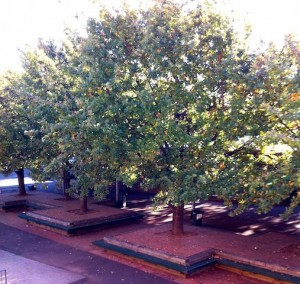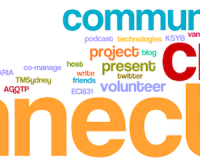In a social world, real and virtual, it is likely that we’ve been baffled by how people behave or what motivates them. As a teacher, one of the biggest challenges I find is to understand what motivates students. Ditto figuring out colleagues. And if I’m truly honest, it is something I wonder as a wife, mother, friend and generally, as a citizen.
When I recently chanced on a TV show that teased “people are irrational beings and we should be surprised when they act in a rational way“, I was hooked. The show was a talk by Hugh Mackay at the Sydney University on his book, What makes people tick? The Ten Desires That Drive Us (show/broadcast also available on the internet; as well, there is a transcript of a similar talk but tailored for business which only mentions 7 of the 10). Mackay is a psychologist, social researcher and author.
The 10 desires that drive people:
- to be taken seriously
- for ‘my place’
- for something to believe in
- to connect
- to be useful
- to belong
- for control
- for more
- for things to happen
- to love and be loved
The desire to be taken seriously
According to Mackay these desires are connected, complicated and sometimes in conflict (think dilemma). He said that what we do is often a mix of the desires but that the one often present, and thus perhaps the most relevant to know, is the desire to be taken seriously.
It [the desire to be taken seriously] is all about the desire to be acknowledged as the unique individual each of us knows ourselves to be – the desire to be noticed, appreciated, valued, accepted … perhaps even remembered.
This really struck me as a wonderful articulation of the interdependence of the “I” and the “other”. As I was mulling over this, days after watching the show, blog posts from my PLN seemingly conspired to emphasise the point. They all came in seemingly rapid succession.
@mrsdkrebs wrote “My one word – Voice”, a manifesto for finding and sharing her voice as well as to help develop the voices of others.
@whatedsaid wrote “A little empathy”, a story of an orderly who showed empathy to a distressed elderly patient at the hospital, when others failed to do so. This post was also a call for educators to teach empathy. (aside: How to teach empathy post is personal favourite).
@colekpharm wrote “Uninvited Gift”, a personal reflection on the dilemma of medical professionals to ‘see’ the patient, constantly reminded of the “fragility of life” and “humanity laid bare”. On one hand, it provides a flipside of @whatedsaid’s post. On the other hand, it calls for the same thing – more empathy.
@billgx wrote “Overcoming Techno-Distance”, a personal reflection that echoes most of the desires listed by Mackay, particularly the human desire to connect and love. Bill wrote about the death of teen Ashley Duncan whose suicide was voiced via social media. In this, Bill echoes my question of how can we better decode social media to help those crying for help.
All of these posts do confirm what Mackay has said about desires that drive people, particularly in the desire to be acknowledged. Perhaps knowing this is one step to understanding people, improving relationships and helping individuals. It helps me, too, to know that yes, this is one of my desires. This comprises empathy, respect and appreciation.
The desire to be taken seriously….
We desire it. So does everyone around us. Let’s try to fill it for at least one person everyday and perhaps the world will be a better place. How? Be there. Listen. Ask. Hold the hand. Hug. Say nothing. Acknowledge something said. Really, whatever feels as necessary….even if it is irrational; after all, we are irrational beings.
A note to teachers
Students (and kids) express this in many ways. In a classroom, this may be tricky and perhaps impossible to do all the time. However, I think it is possible to address everyone’s desire to be taken seriously in the course of the day, week, year. It probably is good to discuss this primordial desire with them. I think it is easier to conceptualise than “Respect”. Besides, quite likely, they too are wondering what makes people tick.




